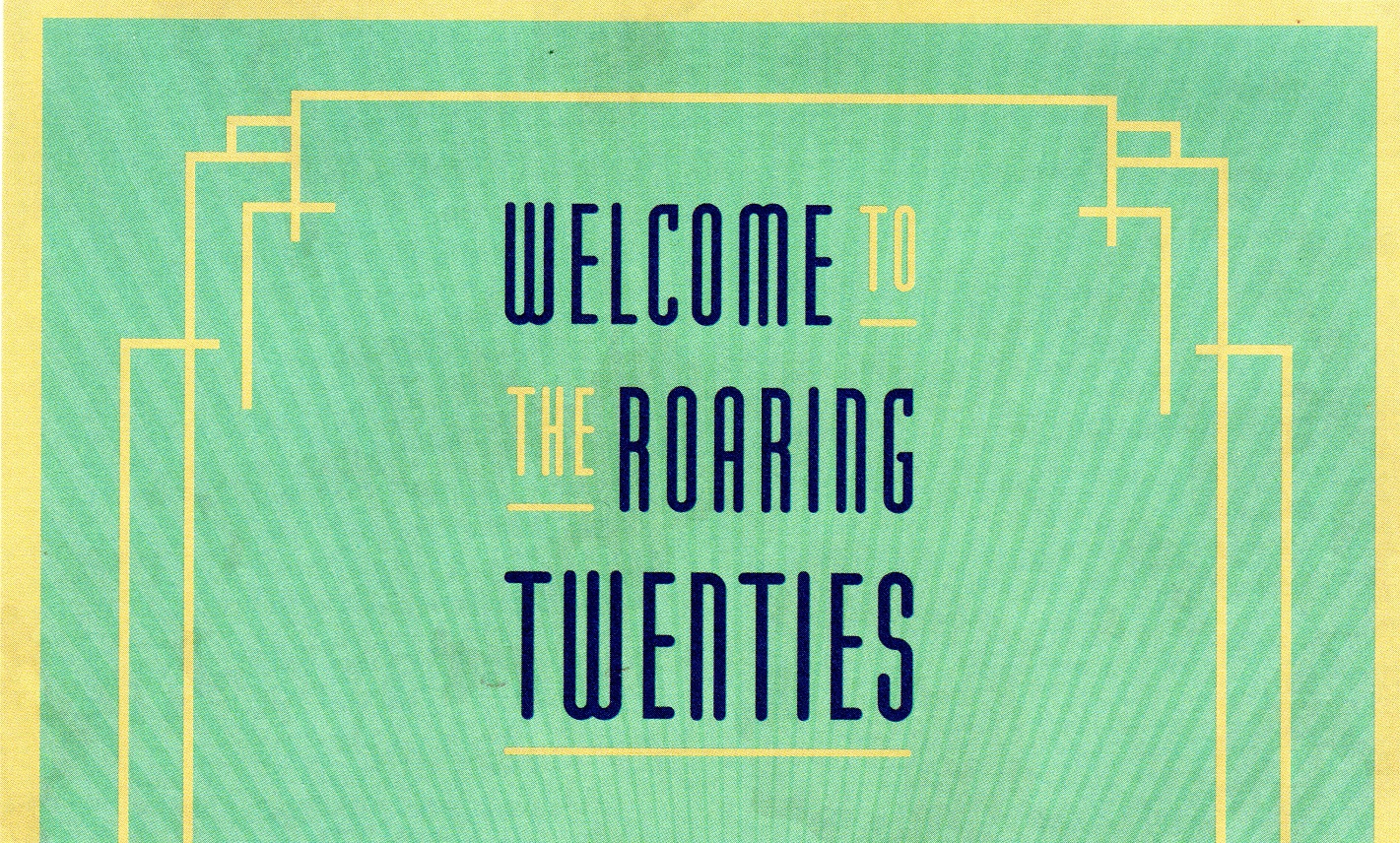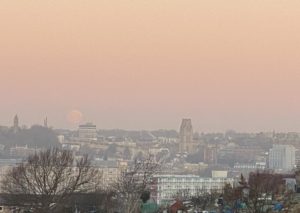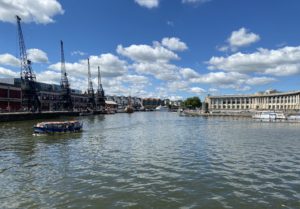
 It was all about the 20s at the Sage, Gateshead last night. The theme was a celebration of the centenary of the Roaring Twenties and the Jazz Age. The iconic fusion of jazz and classical music that is Rhapsody in Blue by Gershwin was very much top of the bill and ensured a big turnout but for me it was the lesser known pieces, tight ensemble playing and solos by members of the Royal Northern Sinfonia that stood out.
It was all about the 20s at the Sage, Gateshead last night. The theme was a celebration of the centenary of the Roaring Twenties and the Jazz Age. The iconic fusion of jazz and classical music that is Rhapsody in Blue by Gershwin was very much top of the bill and ensured a big turnout but for me it was the lesser known pieces, tight ensemble playing and solos by members of the Royal Northern Sinfonia that stood out.
Considering that the two most famous pieces here (the Gershwin and Copland) were both completed when the composers were just 25 it was fitting to have a young conductor at the helm. At only 29, Duncan Ward is a star in the making. His credentials are already recognised by orchestras far and wide with his upcoming schedule including conducting stints in France, Italy, Germany, Romania and Japan). You could tell he really felt and enjoyed the rhythm of the music and this enthusiasm was ably transferred to the orchestra who all performed admirably. Watch this space – I think we will see a lot more of Ward over the coming decades.

Interpretation of Harlem Jazz, painting by Winold Reiss, circa 1915-1920
Martinů’s Jazz Suite was probably the least easy piece for the audience, but for me, I know this is a grower. The tunes weren’t obvious but after just two listens (I was at the rehearsal – more of that below) it was already getting under my skin. I particularly like the small ensemble feel, the interesting piano bits and interplay between instruments I’m looking forward to hearing this piece again.
The Barber Serenade was an odd choice. Barber was always considered a bit of a throwback so this composition seemed to belong to a different age. Furthermore, this work, his Opus 1 wasn’t even premiered until 1930 so didn’t really fit the bill in terms of when it was composed or in having the jazzy feel of the other works. Following the Copland, it honestly felt like being transferred from a seedy Harlem night spot to the Moscow conservatoire circa 1880. This is not to say that the piece isn’t lovely and played delightfully. It just didn’t match the evening’s theme – less Roaring 20s and more prim and proper 1880s. So if I was programming, I would have gone for a more iconic 1920s piece such as Arthur Honegger’s Pacific 231. That would have worked perfectly. However, I can understand that after the Copland, the woodwinds and brass probably needed to take a well-earned breather so I can understand the logic.
The Milhaud piece, La création du monde was performed with all the players (except the pianist and cellist) standing up. And it literally was a standout performance for me being played with real verve and zest by the ensemble. I’ll be listening to this piece again soon. It seemed to be perfectly of its time with ample jazzy swing but also had moments when it looked back to the classical era and others where the incredibly lyrical saxophone playing of Rob Buckland almost foretold the cool jazz of Gerry Mulligan in the 1950s. Super stuff!
Whilst the orchestra’s seats were being arranged after the Milhaud, Duncan Ward asked if anyone had ever been to a concert where a piece by Mabel Wheeler Daniels was played. There was no answer and he said that neither he nor the orchestra had played her work either. Like so many women composers she had a tremendous struggle to muscle into a man’s world in the first place and though she achieved this, the opportunities for significant and enduring air time for her work failed to materialise. Her compositions (and those of other pioneering women composers) are thankfully being rediscovered and given a chance to shine. For me, Deep Forest demonstrated excellent craft but like her more famous contemporary Amy Beach (and the earlier Barber), her music seemed more in keeping with the later romantic period than the modernist idiom. That’s not to say I didn’t enjoy the chance to hear it so I applaud the RNS for bringing it to my attention.
On leaving the concert I heard someone say – “it was worth it just for the last 20 minutes”. They were of course referring to the spellbinding piano playing of Lise de la Salle in Gershwin’s Rhapsody in Blue. Of course, they weren’t saying that the rest was of the concert was poor but the somewhat flippant comment slightly grated on me. The virtuosic playing of the pianist was one bravura performance among many. Personally, I tend not to get bowled over by a piece I know well. For me this was technically superb but was a little bit like a New Year’s Eve firework display – something that you expect to be brilliant and is brilliant but doesn’t necessarily give you the buzz of something new and unexpected. So no criticism in any way, but it didn’t blow me away like the Milhaud.
So on to the Copland – my reason for going and yes, a piece I know very well (albeit on CD). And therein lies an issue – of course a disc gives you the best version that an orchestra was capable of after much practice. If you have listened to a flawless version many times (like I have) you are going to notice any slight mistake. This is of course is readily compensated by the opportunity in the concert hall to attune ones ear to things that you’ve never noticed before when listening in the sanctity of your living room (for me this is usually something played by the double basses, bassoon or percussion). I was lucky enough to get permission to go to the rehearsal and as the Copland was the first on the concert bill it was the last piece to be rehearsed. I was a bit alarmed when the Milhaud (15 minute piece) got 25 minutes rehearsal and the Barber (10 minute piece) got 20 minutes rehearsal leaving the 20 minute Music for the Theatre with just 20 minutes rehearsal time! I am sure Copland would have rolled his eyes as he often felt his works with their difficult rhythms and meter changes never got ample practice before performance. (Have a look at the YouTube clip below where Gerald Schwarz and members of the All Star Orchestra discuss the intricacies of the work).
As a result I was expecting to be slightly disappointed come the evening’s entertainment. But I was wrong to be concerned. During the concert performance the RNS brought their A game. It was near flawless except a couple of trumpet errors which can be excused considering how fiendishly difficult this part is.
Music for Theatre is a suite in five parts with just about equal amounts of fast and slow. There is no theatre or any play. Copland composed music that he felt would fit a dramatic narrative. Prologue starts off with a trumpet fanfare and then goes slow into the strings. Dance is full of exuberant E flat clarinet and trumpets – certainly as joyful as Rhapsody in Blue. Interlude is dominated and bookended by two gorgeous cor anglais solos. Burlesque is full of grotesquery – you can almost hear the ribaldry, see the lude behaviour in the shadows and smell the liquor. Near the culmination of this piece the trumpet and double basses have a wonderful interplay that when done properly (to me anyway) should sound like a drunk slurring their words as they stumble along zig zagging and bumping into things. Even on disc this isn’t always achievable (have a listen to Bernstein and the New York Philharmonic version which takes this to the extreme). The final movement Epilogue is slow again and reworks the themes of Prologue and Interlude and then fades to nothing – again it is possible to visualise the loan worker turning off the lights in the theatre or bar and walking silently home as the sun rises. It’s a great piece and was played brilliantly.

Steven Hudson, oboe and cor anglais
I have to give special mention clarinettist Jernej Albrecht who doubled up with the little E flat clarinet in Dance and also played the soaring opening to Rhapsody in Blue. He really did help transform you back to the 1920s and never missed a beat. But my star of the evening (in frankly stellar company) was Steven Hudson (who oddly wasn’t credited in the night’s programme!) His oboe and cor anglais playing in Music for the Theatre and La création du monde was peerless – even breath taking (and I was only watching!). So all in all a wonderful concert in a stunning location – well worth the long journey north!






Leave a Comment